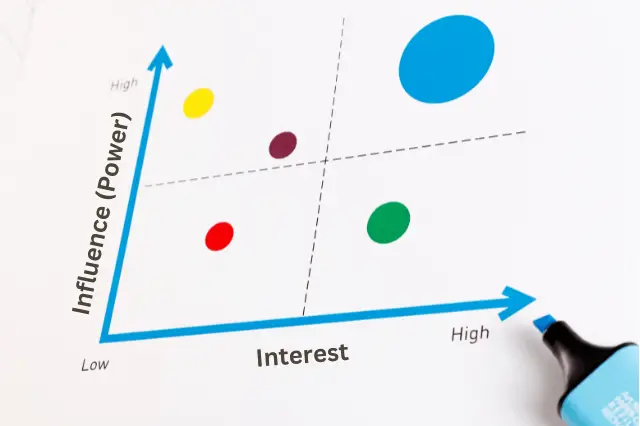Last Updated on October 24, 2024 by andrewshih
Have you ever faced a technical challenge or unclear requirements that made it difficult to move forward with a project?
In Extreme Programming (XP), when teams encounter uncertainties like these, they use a specialized tool called a spike.
This blog post will dive deep into the concept of spikes in XP, explaining what they are, when to use them, how they are conducted, and their benefits in an agile development environment.
What is a Spike in XP?
A spike is a focused, time-limited activity that allows the team to investigate an issue, gather insights, and make informed decisions about how to proceed with development.
A spike in XP is essentially a research task. It allows the team to step back from regular coding work and explore a problem or question in more depth. Spikes are not about producing deliverable code immediately; they are about gaining knowledge and clearing up uncertainties.
A spike can focus on a technical issue, such as assessing the feasibility of a new technology, or a functional issue, such as clarifying vague or complex user requirements. The information gathered during the spike helps the team decide on the best way forward, ensuring they make informed decisions and avoid rework later.
Types of Spikes
In XP, spikes can generally be classified into two main categories:
Technical Spikes
A technical spike is used when the team encounters a technical challenge or needs to evaluate a new technology, tool, or framework. For example, if the team is uncertain about integrating a third-party API or deciding between two different libraries, they may perform a technical spike to experiment and determine the best approach.
Functional Spikes
A functional spike focuses on exploring requirements that are unclear or overly complex. This may involve working closely with the customer to clarify user stories, gather additional information, or define how a particular feature should behave. A functional spike helps the team better understand what the customer wants, ensuring that they build the right solution.
When Should You Use a Spike?
Spikes are not used for routine tasks; they are reserved for situations where the team lacks enough information to proceed confidently. Here are some common scenarios where a spike might be needed:
-
Unclear Requirements: The customer’s requirements are vague, and the team needs more information to accurately estimate or implement the feature.
-
New Technologies: The team needs to evaluate new technologies, frameworks, or tools before making a decision on how to integrate them into the project.
-
High-Risk Features: A particular feature may pose significant technical challenges, and the team needs to explore solutions before diving into development.
-
Estimation Uncertainty: The team cannot provide a reliable estimate due to a lack of clarity about how to approach the task.
Spikes help mitigate risks by providing a structured, focused way to gather information, making the team more confident about their next steps.
The Spike Process
A spike is typically time-boxed, meaning the team dedicates a set amount of time to the investigation—often ranging from a few hours to a few days. Here’s how the spike process generally works:
- Identifying the Uncertainty: The team identifies a problem or area of uncertainty that needs further exploration. This could be a technical hurdle, unclear requirements, or a high-risk feature.
- Defining the Goal: The team sets a clear goal for the spike. This goal is not about writing production code but gathering information or gaining clarity. For example, the goal of a technical spike might be to determine whether a certain framework is compatible with existing systems.
- Time-Boxing the Effort: The spike is time-limited to prevent it from turning into an open-ended research project. The team should decide beforehand how much time to allocate to the spike—whether it’s a few hours or a few days, depending on the complexity of the issue.
- Conducting the Research: The team then conducts the spike by experimenting, researching, or gathering the required information. This could involve building a quick prototype, running tests, reviewing documentation, or collaborating with the customer.
- Documenting the Results: After the spike, the team documents the findings. This documentation could be as simple as a list of options, a recommended solution, or an explanation of the technical risks involved.
- Presenting the Findings: The team shares the results of the spike during the next planning meeting. The insights from the spike inform the team’s next steps, whether it’s proceeding with development, adjusting estimates, or refining the requirements.
Outcome of a Spike
The outcome of a spike should always be actionable. The team might gain:
-
Clarification on how to implement a feature.
-
An evaluation of multiple technical options, with a recommendation on the best path forward.
-
A prototype that demonstrates feasibility.
-
Clearer estimates for the next phase of development.
Spikes may also lead to the creation of new user stories or tasks in the backlog, as the team gains a better understanding of the requirements or the technical challenges involved.
Spikes and Project Velocity
One concern with spikes is that they do not immediately produce deliverable code. However, while spikes may not directly contribute to the project’s velocity (i.e., the rate at which the team delivers features), they are invaluable for avoiding costly mistakes and rework. By resolving uncertainties early, spikes allow the team to work more efficiently and confidently, ultimately improving long-term velocity.
A well-executed spike can save the team from going down the wrong path and help them develop solutions more effectively, ensuring that the project stays on track.
Do Spikes Need Customer Approval?
While spikes are primarily technical or functional investigations, customers should be informed when a spike is required.
For functional spikes, customer involvement is crucial, as the spike may help clarify their requirements or uncover details they hadn’t previously considered.
For technical spikes, customers may not need to be involved in the research itself, but they should be made aware of the time being allocated for investigation.
In both cases, spikes should be planned and prioritized alongside other user stories in the iteration backlog.
The Role of Spikes in XP
In XP, spikes serve as a critical tool for reducing uncertainty. They provide teams with a structured way to explore complex issues, making development smoother and more predictable. By setting aside time to conduct spikes, teams ensure that they are better prepared to tackle challenging features or requirements without interrupting the overall workflow.
XP values flexibility, simplicity, and rapid feedback, and spikes fit perfectly within this framework by ensuring that teams always have the information they need to make sound decisions.
Conclusion
A spike in Extreme Programming (XP) is a powerful technique for resolving uncertainty, whether related to technical challenges or vague requirements.
By dedicating a time-boxed effort to research and exploration, teams can gain the clarity they need to move forward confidently, reduce risks, and improve their overall productivity.
Spikes help XP teams remain flexible, maintain their sustainable pace, and avoid costly missteps, making them a key practice in agile development.
If you’re working in an XP environment and facing uncertainty about how to proceed with a feature, consider using a spike to gather insights and make informed decisions.



